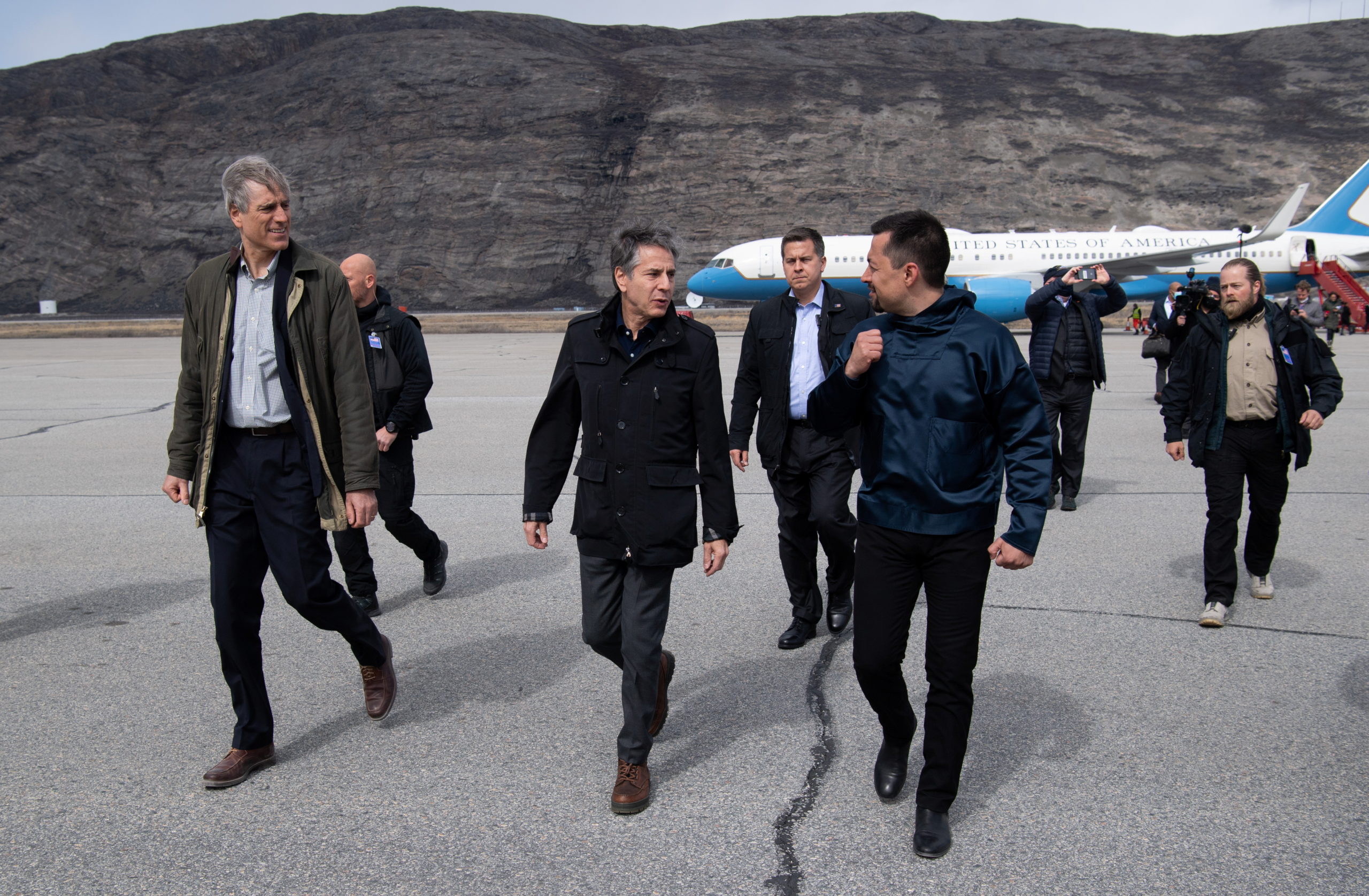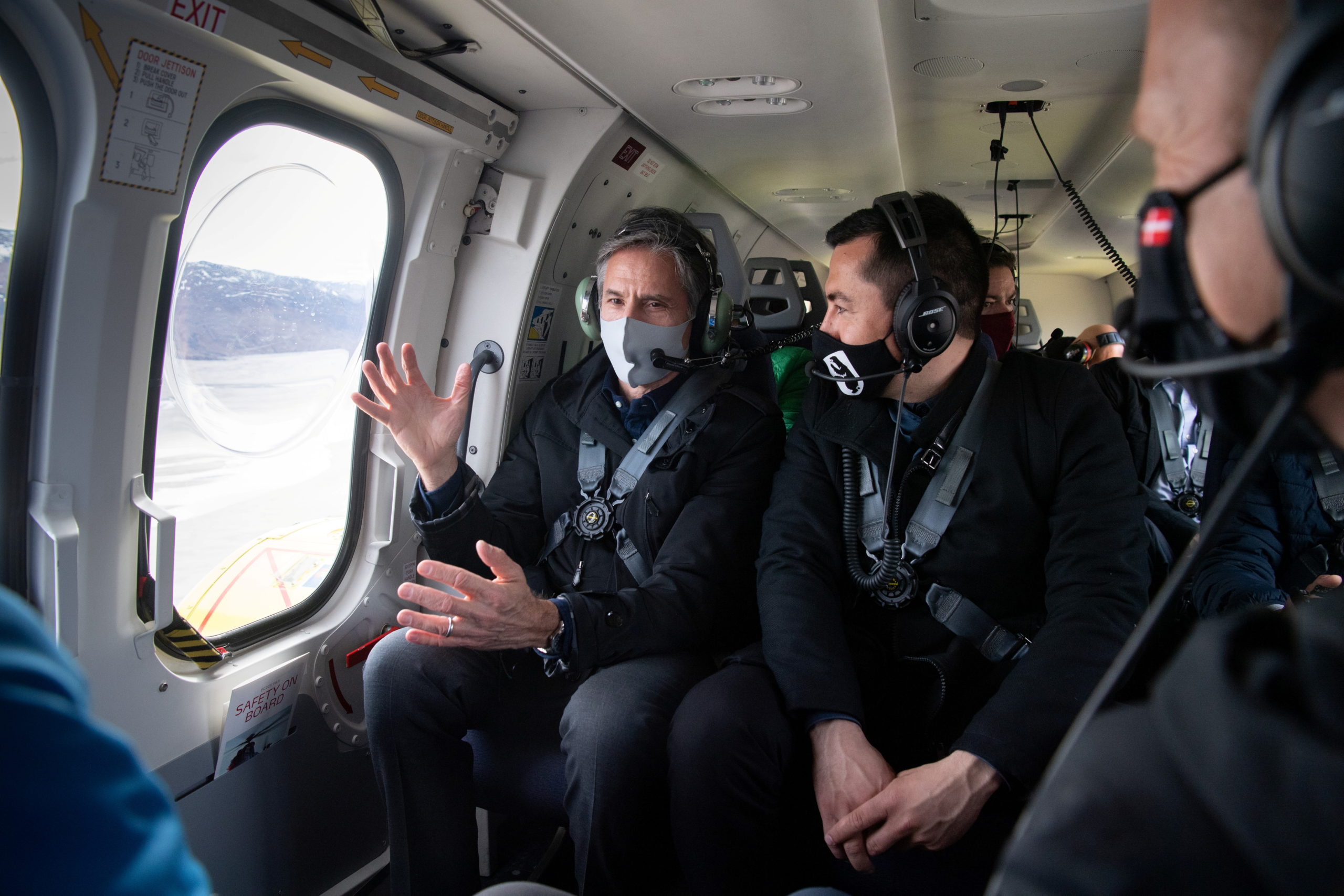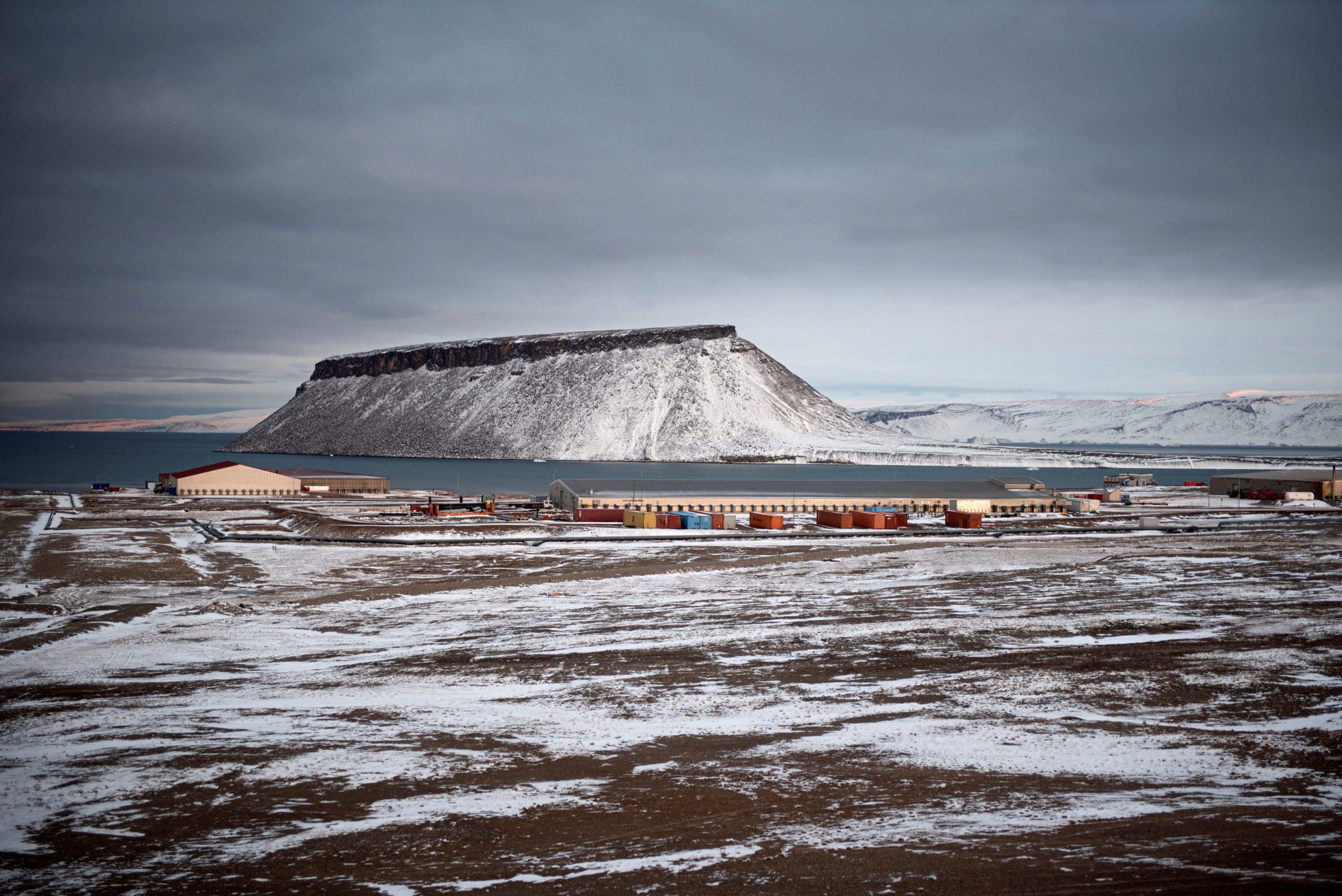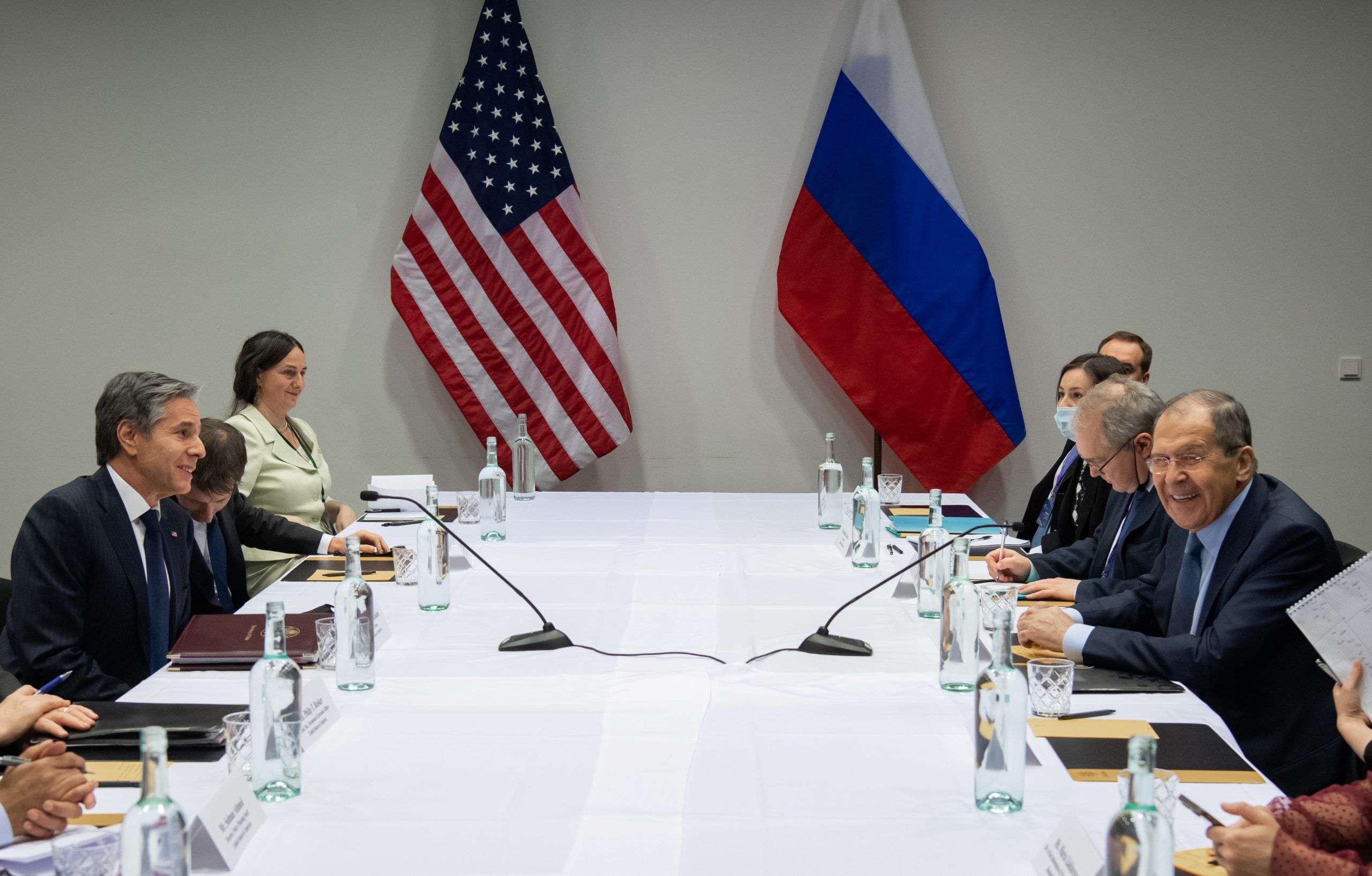This week shows security will continue to compete with climate for priority in Arctic politics
The Arctic Council ministerial meeting in Iceland acknowledged deafening bad news on climate change. But issues of hard security remain pervasive.

As U.S. Secretary of State Antony Blinken traveled home from the Reykjavik Arctic Council ministerial meeting — and his first direct talks with his Russian counterpart Sergey Lavrov — he stopped for several hours in Kangerlussuaq, Greenland’s international airport where he met with the country’s new prime minister, Muté B. Egede.
This may seem a slight event — a minor detail in the major league of Arctic politics. Egede, who is only 34, is the head of a country of only 56,000 people, which enjoys only partial autonomy within the Kingdom of Denmark. Small fry, you may think. But allow me to differ.
The event illustrated how security concerns in the Arctic could soon overshadow the range of crucial non-military efforts on climate, the environment and human progress which the Arctic Council valiantly keeps afloat and growing now for the 25th year in a row.
As part of the meeting in Kangerlussuaq, Blinken and Egede traveled to the top of Black Ridge, a mountainous rock formation some 6 kilometers from the airport terminal, which offers an unforgettable view of the wider airport area, the broad adjacent fjord and the majestic valley that leads to Greenland’s inland ice about 25 kilometers further east.
[Blinken’s stop-over in Greenland highlights its importance to the US]
Blinken was given a short briefing on climate research by the head of Greenland’s Climate Research Center, just as serious climate news had been prepared for the Arctic Council ministerial meeting in Reykjavik. In Iceland, Blinken and the other ministers received the latest analysis from the Arctic Monitoring and Assessment Program, a scientific working group under the Arctic Council, which shows that the mean temperature in the Arctic has risen 3.1 degrees Celsius since 1971. Climate change in the Arctic is now happening at three times the pace as rest of the planet.
Blinken and the rest of President Joe Biden’s administration has vowed to take these calamitous changes seriously, but I suspect the secretary will also have taken home with him from Black Ridge — and also from his helicopter ride to the inland ice with Egede — a deeper sense of Greenland’s pivotal importance to the security of the U.S. and its allies in Europe.

The airport and its closer surroundings used to be a large U.S. military base. Some 1,400 American soldiers once roamed this area, and from Black Ridge one easily detects the pattern of the old base. As a teenager in the 1970s, I had popcorn here at the U.S. cinema. Many of the old buildings are still in use, now for civilian purposes, and rusty military vehicles still rest at the dump.
The U.S. Air Force built this airport during World War II, one of 17 US military installations in Greenland. During the war thousands of US warplanes refuelled here enroute to Europe, where they helped defeat Germany’s Nazi regime.
Soon, the airport may come in handy for the U.S. again. The U.S. is rapidly reinforcing its military presence in the Arctic. Keflavik Airport in Iceland, given up by the U.S. in 2006, is once again used by the U.S. Air Force as it tries to keep track of Russian submarines and their nuclear missiles in the North Atlantic. The U.S. wants more tracking and increased look-out for Russian vessels on the surface and Greenland is a perfect staging post.
The U.S. air base at Thule in the far north of Greenland will also probably need better air defenses against Russian fighter jets. Under heavy pressure from the U.S., Denmark is already stepping up its efforts through its Arctic Command in Nuuk, and more U.S. military activity is expected.
A U.S.-Greenland alliance
Egede and his allies are well aware that security is what primarily drove the U.S. secretary of state to stop over — not climate change, not Greenland’s biodiversity or any other objectives in line with those of the Arctic Council’s.
Greenland is embraced by the U.S. mainly for its role as a security helmet on top of the American continent, where it protects the U.S. from Russian missiles. President Biden’s and secretary Blinken’s analysis of the threats posed by potential adversaries in the Arctic — as well as the U.S. defense force’s need for Greenland’s minerals — do not differ from those established during the reign of former President Donald Trump.
During his stop-over in Kangerlussuaq, Blinken made clear that Trump’s suggestion that the U.S. should buy Greenland has been firmly put aside. But the underlying concerns remain unaltered.

The novelty of the meeting in Kangerlussuaq was, rather, its apparent ordinaryness.
Only three years into the U.S. campaign to strengthen its military presence in the Arctic, we no longer wonder why the U.S. Secretary of State visits Greenland, even if he had already met with Greenland’s foreign secretary Pele Broberg and Denmark’s Minister of Foreign Affairs Jeppe Kofod in Copenhagen prior to travelling to Iceland.
Kofod officially presided over the meeting at Kangerlussuaq as well, but Blinken was there to meet Egede and to strengthen the growing ties between the U.S. and Greenland, including in military matters.
Blinken’s predecessor, Mike Pompeo, was about to make a similar visit after an Arctic Council ministerial meeting in Finland in 2019 and only canceled at the last instance because of trouble in the Middle East. The U.S. has reopened its consulate in Nuuk and it has signed the first two deals with Greenland without formal Danish brokerage. The Danish government says it wholeheartedly supports the strengthening of U.S.-Greenland ties, but others, including outspoken members of the Danish parliament, claim that the sovereignty and cohesion of the Danish Kingdom is under pressure — including by visits like that of Blinken.
The presence in Kangerlussuaq of Broberg, who belongs to a different political party than Egede, even if the two are allies in Greenland’s governing coalition, might support this view. Greenland’s new foreign minister is eager to pursue Greenland’s secession from Denmark and talked openly about the U.S. as a potential replacement for Denmark as Greenland’s main partner during Blinken’s visit to Copenhagen.
U.S. access to Norway
Similarly, in Norway, a few hours flying time east of Greenland, the very fabric of the nation has begun to quiver as security creeps up the ladder as an overriding northern issue.
Norway shares an Arctic border with Russia and the government in Oslo has long been concerned about Russia’s military build-up in the region. Even so, the latest counter-move has raised eyebrows within Norway’s own defense forces: On April 16 Norway’s government signed a 37-page new arrangement with the U.S. that allows the U.S. defense forces “unhindered access” to four Norwegian military installations. Two of these are in Norway’s Arctic north; a rapidly expanding military airport in Evenes and a naval harbor in nearby Ramsund.
Norway’s parliament has still to approve the new arrangement, but all signs say that it will. Henceforth, the U.S. can build hangars and other infrastructure, store ammunition and other equipment, run drills and reconnaissance with naval ships and planes as it finds necessary from four of Norway’s own bases. It can conduct military surveillance and exercises with jets and bombers in the air, look for submarines and do marine patrols in the Barents Sea north of Norway at any time — all close to Russia’s most sensitive nuclear bases and its Northern Fleet, a key instrument of Russia’s nuclear deterrence harbored just around the corner from Norway on the coast of Russia’s Kola Peninsula.
[Nuclear submarine docks in Tromsø as Norway, US bolster Arctic military ties]
A few days prior to the Arctic Council ministerial meeting, I called Tormod Heier, head of research at the Command and Staff College at the Defense University College in Oslo while reporting for a Danish newspaper on the new state of affairs. Heier explained to me that the new arrangement brings Norway’s conservative government close to conflict with Norway’s own constitution:
“The question is whether the Norwegian authorities will still be able to maintain national control, if the U.S. can operate freely from Norwegian territory. There is a potential clash between the need for operational efficiency and the need to maintain national sovereignty,” he said.
Everyone involved in the new arrangement also knew, of course, that it would bring angry reactions from Russia.
Security in the Arctic Council
The results were tangible at the Arctic Council meeting in Reykjavik. As a rule, no talk of security or military matters are allowed at the table in the Arctic Council, but the important messages at these meetings are increasingly delivered outside the formal setting and they are almost to a fault focussed on security.
In the council’s 2019 ministerial meeting in Rovaniemi, Finland, Blinken’s predecessor Pompeo wrote his own page in the history of the Arctic with a speech delivered in a nearby hall in which he basically announced that the U.S. would from then on regard the Arctic primarily as an arena for great power rivalry with Russia and China.
“Our Pentagon warned just last week that China could use its civilian research presence in the Arctic to strengthen its military presence – including deployment of submarines to the region as a deterrent against nuclear attack,” he said, as if to illustrate how science and security would also blur in the Arctic.
Shortly afterward, the 2019 ministerial meeting ended without a joint declaration — the first ever to do so — when the U.S. delegation blocked language about climate concerns, and no consensus was possible.
[Arctic Council marks cordial start to Russian chairmanship in Reykjavik]
This year, Blinken deliberately changed some of that. He stressed the desire of the U.S. to support the multilateral, cooperative and consensus-seeking approach of the Arctic Council and in particular its climate efforts.
“The United States intends to provide up to a million dollars to support the council’s climate environmental protection work,” he said and the final joint declaration was rife with climate language.

Many in the Arctic Council will have welcomed this turnaround, but it could hardly hide the seeping in of unavoidable matters of hard security.
Lavrov repeatedly returned to Russia’s desire for more dialogue about security in Arctic forums
“It is important to extend the positive relations that we have within the Arctic Council to encompass the military sphere as well,” he said at the Reykjavik meeting. He talked of his wish for a re-start of the annual meetings of the Arctic military chiefs of staff, which was suspended after Russia’s annexation of Crimea in 2014.
[Russia calls for military meetings between Arctic states]
Most visibly, the bilateral meeting on the Arctic Council sidelines between Blinken and Lavrov, which attracted much media attention, was of course all about security.
During the final press conference by Iceland’s Minister of Foreign Affairs Guðlaugur Þór Þórðarson, who represented the outgoing chair of the Arctic Council, and Lavrov as the new chair, all four media questions centered on security.
Lavrov talked at length about Russia’s dissatisfaction with the new Norway-U.S. deal and about the sobering prospect of a stronger NATO presence in the Arctic.
Iceland’s Þórðarson, echoing the majority of the Arctic Council member states, dismissed suggestions that security issues should be added to the Arctic Council agenda in the future. He instead applauded the Arctic Council’s founding fathers and their ban on security issues in the body’s deliberations:
“I think that was a wise decision and I think it is important that we keep it that way,” he said at the closing press conference.
The issue will now linger closer to the surface throughout Russia’s chairmanship.
One on point, however, there seemed to be no urgent trouble brewing.
When a Danish reporter asked how Lavrov felt about the widening U.S. military footprint in Greenland, he answered as if few things were further from his mind.
He criticized again the new U.S.-Norway arrangement, but then almost dismissed the Greenland issue:
“That is not particularly close to our borders,” he said.
So perhaps this particular topic may still not be on the agenda of the Arctic Council for some time.